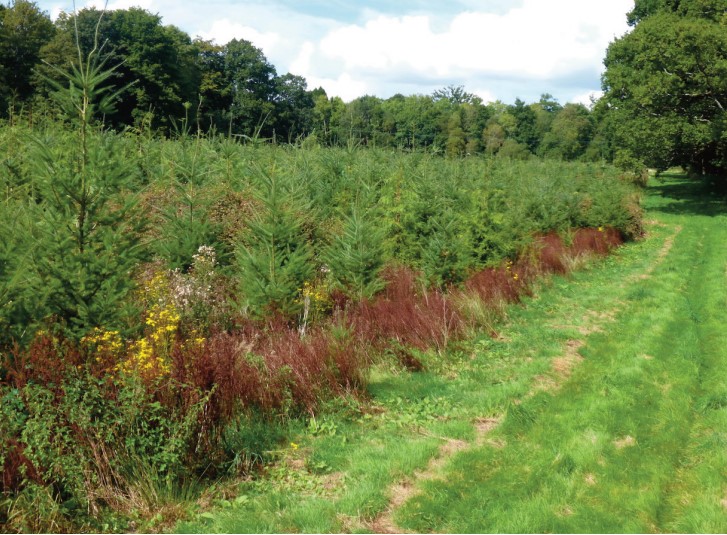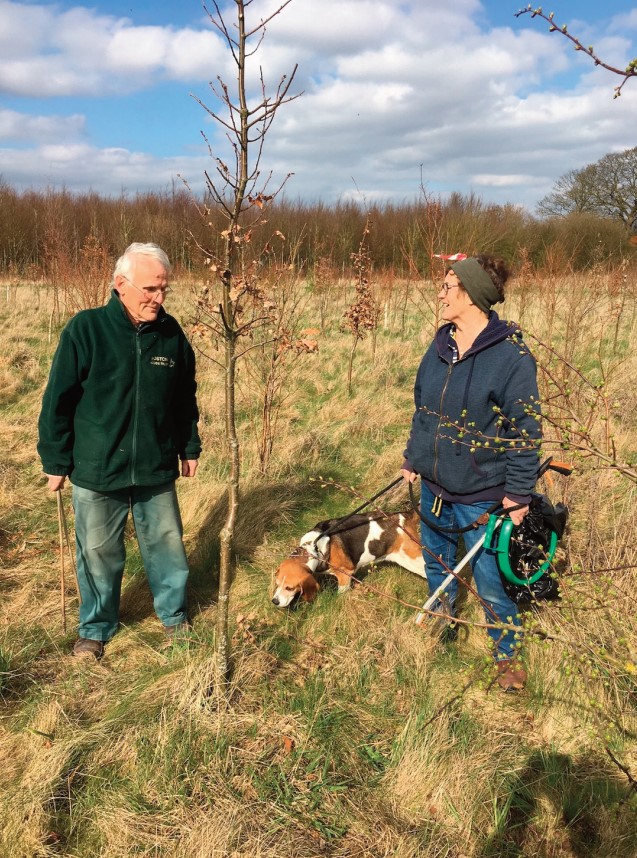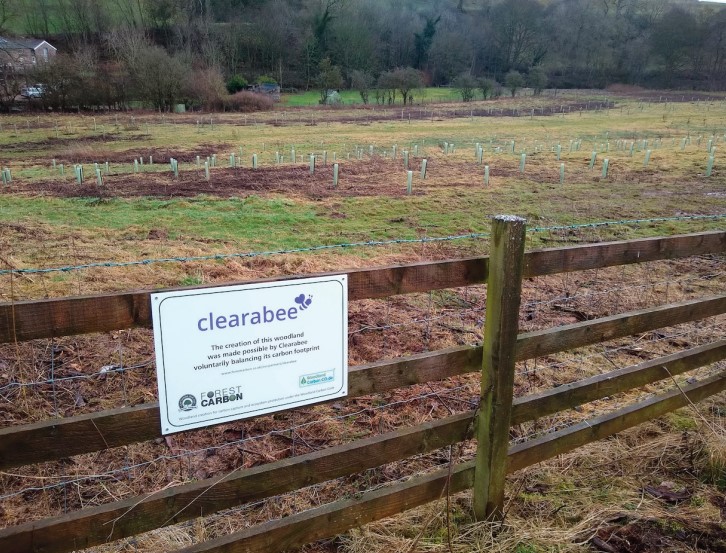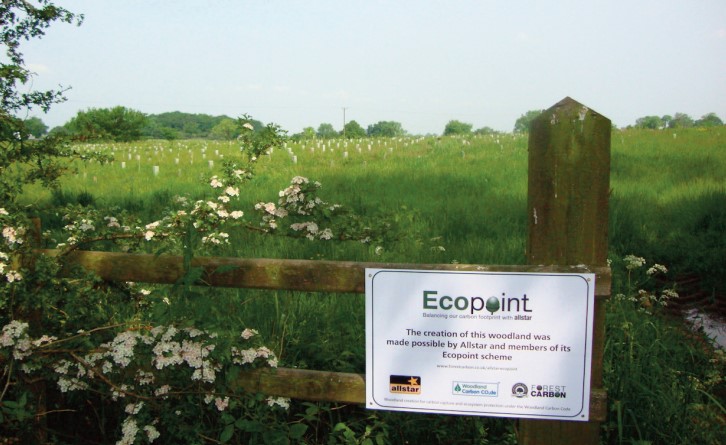A Personal View
By James Hepburne Scott
First published in the Quarterly Journal of Forestry
It is ten years since I last produced an article for the QJF (Hepburne Scott, 2012) on what was then the very new woodland carbon market and the Woodland Carbon Code (WCC) that had just been launched. On re-reading the article I was happy to find that everything I wrote holds good today. But there have been some significant developments and here I share some personal thoughts on just a few of these.
When Steve Prior and I launched Forest Carbon in 2006 our purpose was to stimulate new planting. I was sales director of a tree nursery and planting was less than a third of its 1988 level (Forest Research, 2022). These were hard times for the sector, especially nurseries. It was clear to us that supplementary funding at an early stage could unlock ‘amber light projects’ and turn them to ‘green’. There was no Code and no market. We presented the case for a Code to the Forestry Commission in 2009. Remarkably quickly in 2010 we had a pilot Code to test on the ground and in 2011 it was launched. Under guidance from an advisory board the Code continues to evolve – but essentially exists to provide consistency, clarity and confidence to all participants in this young market. I am not aware of any such code, or even market, anywhere else in Europe. It is now recognised by the global watchdog, the International Carbon Reduction and Offset Alliance, ICROA. It now asks many more questions of the applicant but is easier to access through the England Woodland Creation Offer (EWCO) system and the carbon calculation process is largely automated.

A 55 ha mixed productive plantation at Cranbourne Estate, Dorset, in 2021. The plantation was co-funded by BWOC Ltd and planted in 2014. (Photo: James Hepburne Scott)
Building buyers’ confidence in the market
There are those who would challenge the Woodland Carbon Code and claim to have better systems. I maintain that offering alternative standards, possibly easier to achieve, may appeal to some sellers of carbon credits but would confuse and undermine the confidence of buyers. Without confident buyers there would be no market. The role of the market-maker that Forest Carbon first undertook was to attract buyers and offer them projects that met their needs and in which, thanks to the Code, they could have confidence; then to conclude sales and provide good after-sales service in order to secure repeat business and grow the market.
Today there are many participants, buyers, sellers and intermediaries, and it can be called a busy market. As at March 2022, 366 projects, generating some 7 million tonnes of carbon dioxide (CO2) credits, had been validated. This predicted carbon capture will take place over the contract duration of each project, which will be between 30 and 100 years depending on the characteristics of each wood and the owner’s preference. A further 1,168 projects totaling approximately 19 million tonnes were awaiting validation (woodlandcarboncode.org.uk/uk-land-carbon-registry). This illustrates the rapid recent increase in activity under the Code.
Revision of the Code
The latest Code revision, version 2.2, was introduced in May 2022 (woodlandcarboncode.org.uk/). It applies to all projects that have not completed planting or applied for validation by 30 September 2022. The biggest change is to the determination of ‘additionality’. This means that the buyer of a carbon offset must be able to claim that by buying the offset they have effected change. Projects, in turn, must be able to show that without the added income from the sale of those credits the woodland creation would not have gone ahead. The new investment test requires that over the duration of the project (minimum 30, maximum 100 years) the net present value (NPV) of the project is negative or lower than it would have been under the former land use on that site. The NPV is determined by a spreadsheet calculator that is pre-programmed with standard establishment and management costs, standard timber yield and price, and standard values for farm income foregone. This should provide certainty to landowners and farmers considering woodland creation, as the standardised tests can be applied early on in project planning. I do envisage some argument about the farm incomes, for example where the land was previously leased, and would hope that some finer grain can be applied than just Less Favoured Area (LFA) or non-LFA, arable or livestock. The standard figures used to predict timber volume for additionality will be different from the project values used to predict carbon capture.
Land values
The new test does not consider opening and closing land values, which were an integral part of the previous version. This means that projects where land has been purchased by an investor for timber production and generation of carbon credits must still show that this will produce a lower return than previous land use. This change was partly in response to investors bidding very high prices to secure planting land backed by the near certainty of carbon income on top of timber. They would then evidence the inflated price of land to justify carbon income – a circular argument.
There is increasing interest from companies wanting to buy land for the development of nature-based solutions to compensate for their own business operations. This is called ‘in-setting’. An unfortunate consequence of this has been the extreme distortion of agricultural land values often excluding farmer buyers. For many farmers the opportunity to acquire more land nearby is their best chance of maintaining a viable business. The problem occurred most widely in Scotland and Wales but the new test will apply equally to existing owners and new investors everywhere.

Boston Beachwood Trust trustees, Adrian Isacc and Frances Brookes, in a community woodland at Boston, Lincolnshire, in 2021. The 4ha wood was planted in 2016 and co-funded by Kier Living and Allstar Business solutions. (Photo: James Hepburne Scott)
Discounting
The new additionality assessment is based on discounting all costs and revenues over the project duration at a standard 3.5% discount rate, applied to the forestry project and ‘business as usual’, i.e. continuing agriculture. This is not something that most farmers usually consider; short-term cash flow is more likely to be their immediate concern. Again, there is no allowance for this in the new test.
It is likely that most new native schemes with little or no income prospect will pass the test. Projects with a large productive element and low opportunity cost are likely to fail, in which case they may consider reducing the productive proportion or applying for a smaller grant. A current argument, which I support, is that forestry investment appraisal requires a higher discount rate than continuing agriculture. At the time of land purchase the outcome of a protracted EWCO application is far from certain. This is permanent land-use change and there are existential risks including pests, diseases, weather and climate change. Farmers with relatively short enterprise cycles can hopefully adapt; foresters cannot.
Planting targets
UK new planting remains stubbornly below 14,000ha per year and in Scotland has been declining slightly from its high point in 2019, according to provisional figures. It is clear to me that to achieve anywhere near the 30,000ha target will require substantial new forestry investors. The purpose of the carbon market is to stimulate new planting. In my opinion it should, without reducing the robust nature of the investment test, encourage these new investors and further consideration should be given to what they consider an appropriate rate of return for a forestry project.
Will one size fit all?
Whilst additionality can be demonstrated mathematically on a spreadsheet, I know that in reality it is a highly subjective concept that rests in the minds of farmers (owners, tenants, commoners and crofters) and their families, of estate trustees and indeed directors of investment firms. These have very different motivations and inhibitions. Standard costs and income foregone values are blind to these differences.
It is good that Scottish Forestry will be conducting a feasibility study on whether an alternative financial test could be developed that conducts a more in-depth examination of a project’s finances. If adopted this would apply to large schemes with more complex financial arrangements and would use actual, rather than standardised, data.
It would also require an additional level of third-party scrutiny as to the veracity of the data. As applications proliferate, the certification bodies, the Soil Association and Organic Farmers and Growers, are already under a huge workload pressure (like everyone in this sector). Introduction of this alternative test would increase this load at a time when there is an urgent need to speed up the validation process in order to facilitate sales. Certification costs will have to reflect this additional work so that the whole certification system can function faster.
A sellers’ market – but for how long?
The Code refers to two distinct forms of carbon credit. A Pending Issuance Unit (PIU) represents a promise to deliver a tonne of CO2 reduction within an agreed time period, known as a vintage. These credits are not offsets and cannot be used by businesses to support net-zero claims. Alternatively, a Woodland Carbon Unit (WCU) represents a tonne of CO2 taken from the atmosphere and locked up as solid carbon in timber. PIUs will be converted to WCUs following satisfactory verification of the growing woodland. The Code requires verification at year five and every ten years thereafter. Owners may choose to verify more frequently, i.e. every five years, in order to sell WCUs. Buyers of WCUs may report them as offsets contributing to their net-zero claims.
As recently as 2020 the price of a PIU was typically around £3. At the time of writing it is in the range £15-20 depending on the location and type of project. Many project owners are registering with the UK Land Carbon Registry and presenting for validation but do not wish to sell at present. They expect the price to rise further and they may be right. Numerous price factors may come into play, including the possible inclusion of land-use and forestry in the UK Emission Trading Scheme. (The Defra consultation on this question closed in June.) At present it is a sellers’ market; they may choose to whom they wish to sell and expect to negotiate prices. It should, however, be borne in mind that for many buyers this is a voluntary activity and the current cost-of-living crisis is putting pressure on their margins. Buying carbon credits may be a decision that can be put on hold. Furthermore, a large stock of unsold PIUs is accumulating and these will eventually come forward for sale. This market does not, yet, provide reliable price transparency, i.e. reports of very high or very low prices (we receive both) may refer to individual small transactions and be unreliable. But bad news travels fast and could result in a sudden rush to sell. Even the FTSE is not immune from this syndrome.
Is holistic greenhouse gas accounting next?
Another reason why many farmers who are willing to plant are reluctant to forward-sell carbon credits is that they anticipate questions from their food (and drink) chain customers about the greenhouse gas emissions related to their farm or individual products. These questions are only just starting to be asked by some retailers, and cover a small part of UK farm produce.
Great uncertainty surrounds this important issue. Can we expect a properly joined-up question relevant to farms UK-wide? It would be disastrous if different systems applied in all four UK countries. Do we look to Defra to articulate the question? Or should we look to the farmers unions, which are themselves devolved organisations, to devise a protocol? Or the food and drink business sector itself? Who would represent this very wide group? How would they address the questions to the many worldwide producers of so much that we import? Will there be numerous questions relating, for example, to meat, milk, grain etc? Or will there be a single overarching question focussing on the greenhouse gas status of the whole farm or estate business, which these days can comprise many holdings? That would be my preference. Not least, what would be the penalty for failing to produce a satisfactory answer to the question?
The Government Food Strategy 2022 for England says: “Domestic food production can reduce the offshoring of food production to countries that do not meet our high environmental and animal welfare standards. It will also play a critical role in meeting government’s carbon budgets and environmental targets, delivered through farmers and land managers. Through the net zero strategy, we are committed to reducing agricultural greenhouse gas emissions and mitigating climate change.” (Defra, 2022) But there are no signs of how this will be achieved.
The farming sector needs clear unequivocal guidance as a matter of urgency. My thought meantime is that every farm business should be conducting a greenhouse gas audit, ideally using more than one system. As yet none of the systems on offer has received government accreditation. Based on these audits, farmers could then at least devise a plan for reducing emissions and repeat the audits at suitable intervals to demonstrate progress. Hopefully this plan will include planting woods, which will provide many benefits besides carbon capture. We anticipate the launch of a hedgerow carbon code and possibly an agroforestry code before long. Meanwhile, in these uncertain times, those holding validated PIUs have the option to sell some and retain some. These can be sold later as WCUs. This will hedge against price movement whilst leaving a valuable asset with the property for the benefit of a future owner should it change hands within the lifetime of the contract.

One compartment of a 165ha mixed productive plantation at Lowther Estate, Cumbria, was co-funded by Clearabee Ltd. Planted in 2018, this is the site in 2019. (Photo: James Hepburne Scott)
Woodland Carbon Guarantee
The Woodland Carbon Guarantee is a £50 million government-backed scheme designed to accelerate woodland planting rates in England. It was an objective in the 25 Year Environment Plan, opened in January 2020 and is administered by the Forestry Commission. It allows projects the option to sell WCUs to the government for a guaranteed price every five or ten years up to 2055. Projects can still choose to sell the credits at any stage on the open market rather than to the government. At the first four auctions, 177 projects were offered of which 95, covering 2,350ha, were successful. The average price per tonne has been just over £20. (We do not know the range.) For many projects the PIU market probably now represents better value than the guarantee price, which is just what its designers intended.
The principal reason for the impressive price rise has been the advent of the net zero movement. Many businesses have set science-based targets for emission reduction, know they will have to offset large tonnages and are looking to the Woodland Carbon Code to deliver.
But there is a problem. We do not have enough available land. Let us consider agriculture alone. The Committee on Climate Change estimates UK GHG emissions at 447 million tonnes CO2 equivalent per annum, a reduction of 47% since 1990, and 10% since 2019 (CCC, 2022). UK agriculture is responsible for some 50 million tonnes, approximately 12% of the UK total, a reduction of 4% on 2019.
In its 2018 report the CCC proposed a range of measures that could reduce land-use emissions by 64% by 2050 (CCC, 2018). These included reduction of nitrous oxides, methane and carbon dioxide and that we should consume less red meat and dairy produce, and reduce waste. This would leave 18 million tonnes to be offset by the annual afforestation target of 30,000ha. It is interesting to recall that the Read Report (Read et al., 2009) estimated that if forestry planting averaged 23,000ha per year from 2010 to 2050 annual sequestration could be 10% of UK emissions at that time. This would equate to a 4% increase in forest land cover. As planting has averaged approximately 10,000ha per year since 2009 if we were, by a miracle, to achieve the 30,000ha target from now until 2050 that would, by happy chance, achieve the Read target and theoretically balance out land-use emissions. But in the meantime, a large proportion of the validated carbon credits arising from this planting may have been secured by other sectors to meet their own net zero objectives.
The NFU set a target that UK agriculture should be net zero by 2040 (NFU, 2020). Let’s look at this challenge in another way and start by moving the goal posts to 2050 in line with the Food Strategy and assume we do plant 30,000ha per year for 28 years, a total of 840,000. In 2050 the average age of these trees will be 14 years, an age at which they would be sequestering approximately 12 tonnes per hectare per year, a total of some 10 million tonnes.
These figures are approximate and embrace many assumptions but they lead us to a stark conclusion. If agriculture emissions were to reduce by 64% and we were to achieve 30,000ha each year until 2050, this new forest would only account for about just over half of those reduced emissions, let alone meet the needs of non-agriculture businesses.
Confidence matters
It is important to understand what buyers in this voluntary market are looking for. Until recently most were content to make a ‘soft’ corporate social responsibility claim to enhance their green credentials and differentiate from competitors. Purchases of PIUs would suffice. Today, increasingly, the enquiries Forest Carbon receives come from businesses aiming for net zero. They would like to buy WCUs, which are still only available in very small quantities in the UK. Many of these potential buyers have committed to achieving this target by 2030 or sooner but have not quite understood how slowly trees grow. Net zero requires that they avoid and reduce emissions by all affordable means and only then turn to offsets. This can be through the purchase of verified reductions, principally from third countries where they are relatively plentiful, cheaper than UK PIUs and can be reported as reductions immediately. These include renewable energy and avoided deforestation projects.
Many of the companies we talk to are fairly confident of being able to reduce their Scope 1 and 2 emissions. Scope 1 covers emissions from sources they own or control directly – for example from burning fuel in their fleet of vehicles (if they’re not electrically-powered). Scope 2 are emissions that a company causes indirectly when the energy it purchases and uses is produced – for example, for an electric fleet the emissions from the generation of the electricity consumed.
How to address Scope 3 emissions can be a more difficult challenge. These are emissions that are not produced by the company itself but by those that it’s indirectly responsible for, up and down its value chain. For a supermarket group, for example, these would include the emissions arising from the farms supplying them. These would be the Scope 1 and 2 emissions of those farms.
However, many firms are prepared to buy PIUs as a long-term hold until they mature into reportable WCUs and for their intrinsic co-benefits. And UK projects are attractive to them as they like to support projects near home that offer opportunities for employee engagement and can have their name on the gate. There is growing awareness of the loss of our native biodiversity and they want to understand how their investment helps in this regard. UK projects offer a greater degree of confidence in their investment. These home-grown projects offer a range of co-benefits: wildlife, habitat connectivity, natural flood-management, water quality, recreation etc. Customers want to understand what these are, so at Forest Carbon we now require at the outset a statement of these objectives. In due course most customers will ask for evidence of achievement. Investors’ confidence is based squarely on the Woodland Carbon Code, which requires that all projects meet the UK Forestry Standard. The integrity of the Code is the foundation of this market.
Credit stacking
The Code also now addresses the frequently asked question of ‘stacking’ of credits. At present we only have satisfactory and affordable metrics for carbon sequestration. Projects offering substantial co-benefits or ecosystem services, bundled together with carbon, can command premium prices. The Code acknowledges that it may in time be possible to separate these benefits and sell them to other buyers for additional revenue. It stipulates that there must be a credible voluntary standard and methodology for these other services approved for use by the WCC Secretariat. All income streams must be declared in the WCC cashflow spreadsheet. It should be borne in mind that these additional incomes may render the project financially invalid if it thus shows a higher NPV than the previous activity on that land.
This has been an exciting 16-year journey and I am happy to pass on the baton to the next generation who are brighter and more energetic. When we made the case for the development of a code in 2009, we never imagined how it would develop. Soil carbon, blue carbon, agroforestry and hedgerow carbon codes are just around the corner. To succeed they will all require equally rigorous standards.

A 15ha native woodland planted in 2016 by the National Forest Company and co-funded by Allstar Business Solution. This is the site in 2020. (Photo: James Hepburne Scott)
See our blog page for more insights on the UK carbon market.
References
Climate Change Committee (2018) Reducing UK emissions – 2018 Progress Report to Parliament, London.
Climate Change Committee (2022) Progress in reducing emissions – 2022 Report to Parliament. London.
Defra (2022) Government food strategy. [online at gov.uk/government/publications/government-food-strategy/government-food-strategy]
NFU (2020) Achieving Net Zero – meeting the climate change challenge. [online at nfuonline.com/updates-and-information/achieving-net-zero-meeting-the-climate-change-challenge/]
Read, D.J., Freer-Smith, P.H., Morison, J.I.L., Hanley, N., West, C.C. & Snowdon, P. (eds) (2009) Combating climate change – a role for UK forests. An assessment of the potential of the UK’s trees and woodlands to mitigate and adapt to climate change. The synthesis report. The Stationery Office, Edinburgh.
Forest Research (2022) Provisional Woodland Statistics 2022. Roslin.
Hepburne Scott, J. (2012) Forestry Carbon Credits – A market-maker’s view. Quarterly Journal of Fore
/public/692/dd7/e0c/692dd7e0ca905474952387.jpg)
/public/68f/f39/36d/68ff3936defff352354004.jpg)
/public/68d/a53/023/68da530233e97825782884.jpg)